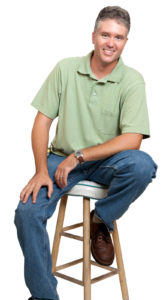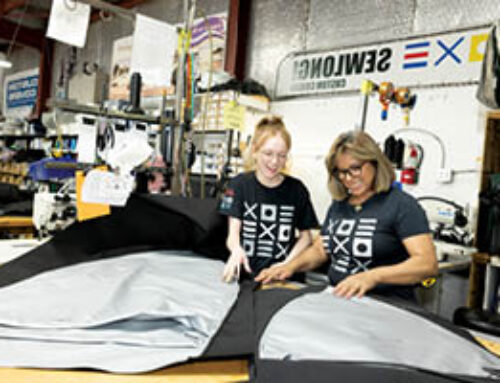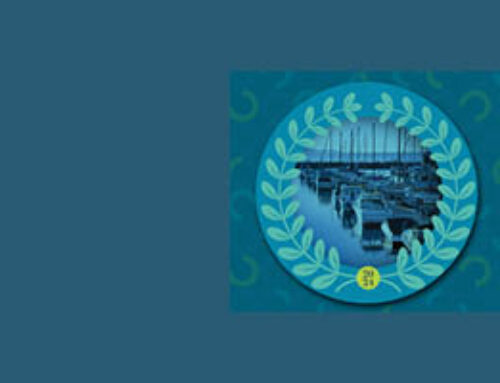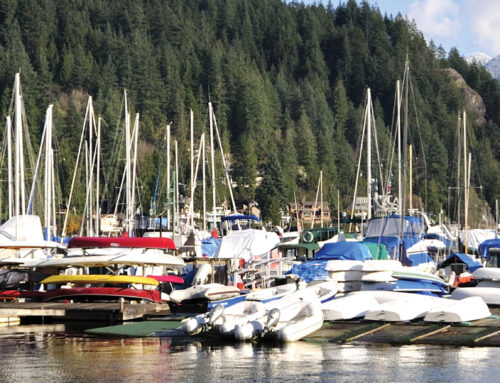Fabricator profile: Keith Purves
“It’s usually after I’ve banged my head a few times when facing a problem that I think: There’s got to be an easier way,” says Keith Purves, MFC, owner of Riverside Covers in Ft. Myers, Fla. “And then I just try it.”

Keith Purves, MFC, owner of Riverside Covers in Ft. Myers, Fla.
About five years ago Purves and his wife took over the custom marine canvas shop that his mother started in 1986. The business employs up to five other employees, depending on the economic climate, and that’s exactly how he likes it. The fact that Riverside Covers is a small shop allows Purves to customize not only projects, but also the tools that help him get those projects done. “I make tools to fill a void for something I don’t have, something that I can’t readily find, or something that’s just not available,” he says. “The tools range from extremely simple to fairly simple.”
Simply effective
Some of the tools he’s made are as simple as a clear plastic storage container with a hole drilled in the lid to measure out zipper chain, which arrives to the shop packaged on a difficult-to-store cardboard sleeve. Or the versatile marking tool to draw seam allowances and cut lines that he fashioned out of scrap pieces of plastic curtain track and duct tape. “‘Necessity is the mother of invention’ is pretty much my philosophy when I build things,” he says. “I’ve been called a redneck MacGyver more than once.”
Some of the tools he’s created are a bit more complex, though usually they involve inexpensive and/or repurposed materials. He designed a mounting pad for bimini tops using a piece of plywood covered with non-skid shelf liner he bought at the dollar store. “I came up with that one after I dinged up a few boats with the leg of the bimini top trying to muscle it around to align it,” he says. “The tool allows me to open and adjust the bimini quickly and easily without risking damage to the boat.”
He also made a portable bimini frame bender by combining several different designs. He fashioned the tool, which is capable of bending and crowning stainless steel and aluminum tubing, out of 1/2-inch plywood and 2-by-8s.
Purves wrote several “how to” articles for Marine Fabricator in 2010, providing step-by-step instructions for building and using some of his creations. “I’ve heard from people who said that every time the magazine came out they would go out and build the tool,” he says.
There are a few more tools he’s created that he has not yet shared. He usually enters them in the “Tools, Tricks and Tips” contest that runs every year at the Marine Fabricators Association (MFA) National Convention.
The right fit
Purves applies the same problem-solving approach he uses with tool innovations to dealing with his clients. “I try to get a feel for how the customer is going to use the product so I can build something that doesn’t just fit their boat, but also fits them, their lifestyle and the way they use their boat,” Purves says. “For instance, I have a lot of customers who are older and have arthritis so it’s hard for them to work snaps. They also may not have the strength to handle a full boat cover, so I’ll split the cover into individual sections that are easier to handle.”
Quite often it’s a case of the customer thinking they know what they want for their boat, but not understanding how a particular product will affect their boat use. “People ask me all the time to build a full tie-on boat cover when it would be extraordinarily difficult for them to put it on on a daily basis,” he says. “They’d end up taking 45 minutes to put the boat cover on and end up not using their boat because of that. They may not want to hear this but they may need two covers: one for summer months that’s smaller and easier to use, and one for winter months when the boat’s in storage.”
Break it down
Tools for project fabrication aren’t the only kinds of tools Purves has designed. He’s also crafted a few “tools” to help him accurately bid jobs. Purves created job sheets for the different types of projects he’s typically asked to do. He has worksheets for storage covers, shade tops, enclosures and upholstery.
He then breaks each job down into five categories: prep work, which includes gathering and/or ordering materials and assembling tools; patterning time, which includes time spent on the boat taking measurements; layout, which is time spent on the table transferring patterns to fabric and/or foam; sew time, which is time on the sewing table; and installation time.
“While I’m sitting on the boat, I break the job down into each of the categories and envision how many people and how many hours each step of the project is going to take,” he says. “That helps me be far more accurate in giving a quote.” He also uses the MFA’s Time Standards Manual, which he refers to as his “go-to” book for accurate quoting.
However, that’s not to say that the unforeseen doesn’t creep up and change the game from time to time. “I recently completed a job that ended up having a problem area that leaked,” Purves says. “After I tried several different remedies to correct it, I had to take the entire job down, make a modification to the arch and put the entire job back up. Basically I didn’t get paid for that part. But the customer was ultimately so pleased he ended up being one of my biggest customers of the year, as well as one of my best references, so it turned out well.
“And besides, the more challenging the job, the more enjoyment I get out of it.”
Sigrid Tornquist is a freelance writer from St. Paul, Minn.
What has been the biggest turning point for your business?
About five years ago when my wife Tammy came on board she started computerizing our records and billing procedures. Less than a year ago she launched our website. We’re one of the only custom canvas shops in Ft. Myers that has a website, and we generate a lot of business from it.
How have you adjusted work practices to survive dips in the economy?
I rent shop space in a large building that is divided into individual bays. I’ve been able to expand and contract my business’s size—the number of staff and the number of square feet—as the economy changes.
 TEXTILES.ORG
TEXTILES.ORG 






